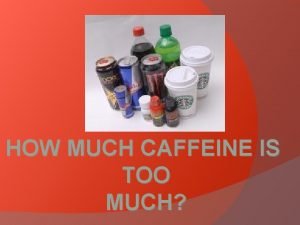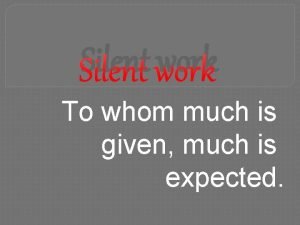Social Choice How much environmental protection environmental protection






- Slides: 6


Social Choice: How much environmental protection? • environmental protection costs resources. • How are we to decide how much resources to allocate to environmental protection and how much to allocate to other goods? • We start by treating environmental protection much like any other good. • Let x be a set of goods and e be the quality of the environment. • A CONSUMPTION BUNDLE or ALLOCATION is a set (x, e). • Just like we get enjoyment or utility from conventional goods, we get utility from…. Let ui (x, e) denote the utility person i gets from the allocation (x, e)

Utility value of environmental goods • The reasons people get utility from a clean environment vary from person to person and • include: • 1. HEALTH BENEFITS of clean air and water • 2. USE VALUE. Enjoyment from visiting, watching • 3. EXISTENCE VALUE. Utility achieved without using • 4. ALTRUISM: ui (x, e) = ui (x, uj (e)) • 5. PRODUCTIVITY VALUE: C 02, agri loss, skiing ind.

continue. . • So we need to think carefully in each context about what e represents. The consumption e could be “healthiness, ” which declines with pollution, or e could be “fishing, ” which declines with mercury emissions, • or e could be the knowledge that the Arctic wildlife refuge is pristine. • In addition, we can switch our thinking: • • GOODS: consumption of a good gives utility. • • BADS: consumption of a bad lowers utility. • It makes no difference whether we think of clean water as the good or mercury emissions as a bad. but here e is the good

Indifference Curves

• utility increases as we move either up or to the right. More goods implies higher utility. • also convex indifference curves. • This results from diminishing returns. I • f we have already many televisions then we do not value additional televisions very much. • If an allocation has many televisions and a poor environment, then to we can get the same utility by giving up a television for a very small improvement in the environment.











